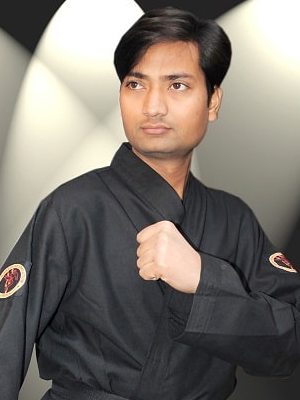Traditional Karate and Sport Karate represent two distinct yet interconnected facets of the martial art discipline. Traditional Karate, deeply rooted in centuries-old Japanese martial traditions, emphasizes the cultivation of character, discipline, and self-defense skills.
It places a strong emphasis on kata, or predetermined forms, which serve as a means of practicing techniques, developing muscle memory, and understanding the principles of combat.
Traditional Karate also prioritizes philosophical aspects such as respect, humility, and self-improvement through rigorous training in the dojo.
On the other hand, Sport Karate has evolved as a competitive endeavor, focusing on scoring points through dynamic techniques and fast-paced sparring matches.
It often incorporates rules and regulations tailored for tournaments, emphasizing speed, agility, and strategy to outscore opponents within a controlled sporting environment.
While sport karate still values technical proficiency and physical fitness, it tends to prioritize performance-oriented skills over the holistic development of the individual practitioner.
Despite their differences, both Traditional Karate and Sport Karate share common roots and techniques, with practitioners often drawing inspiration from both approaches to enrich their training and understanding of the martial arts.
Before you pick a karate school for your child, it’s important to know what type of karate it teaches. Basically, there are two kinds: traditional karate and sports karate.
Traditional Karate And Sport Karate
Both types teach fighting moves, but they focus on different things. Traditional karate is about improving yourself (budo), while sport karate is more about staying fit and competing.
Traditional karate is the very first kind of karate. It started in Okinawa, Japan, as a way to defend oneself without weapons. It’s been around for over two thousand years and was influenced by martial arts from China.
Sport karate, on the other hand, comes from traditional karate. It uses similar stances, punches, and kicks, but it’s changed a bit to be more about competing.
Objective and Purpose
In traditional karate, the main goal is to protect yourself and stay safe. It focuses on delivering a strong final hit in a fight that can knock out or stop the attacker.
In competitions, whoever lands this final hit gets a point. The aim of this fighting style is to train both the mind and body to be strong and well-coordinated through practice.
Sport karate is mostly about competing and earning points. Points are given for quick and accurate hits with either the hands or feet. There’s no need for a finishing blow like in traditional karate. The aim is to build a strong competitive attitude and win matches.
In traditional karate schools, the training places are simple. They usually have wooden floors and not many decorations. This is similar to how Japanese dojos are set up for karate practice.
Sports karate classes happen in modern spaces. Instead of wooden floors, they use mats, which are safer, especially for kids. They also have large mirrors on the walls to make it look like a professional studio.
In traditional karate competitions, the opponent’s weight and height have no significance. Its purpose is to unify the strength of the body in a single blow (finishing blow).
In sport karate competitions, weight categories are established. There are 8 different weight categories.
Techniques
Traditional karate is a lifelong study and pursuit. In this form of karate, individuals repeatedly practice techniques to perfect them. The techniques are clear, demonstrating strength and control over the body.
In sport karate, techniques are more fluid and responsive, designed for modern combat. Sometimes, other techniques are also adopted to teach students the most effective ways of self-defense.
Both traditional karate and sport karate are valuable, but they differ in their essence, purpose, setup, and techniques. Simply put, traditional karate is an art, while sport karate is an organized sport.

Martial arts trainer Karatians School India, Thank you for reading this post. This website is about martial arts, sports, and entertainment. Its goal is to make more people aware of martial arts and help them become self-reliant.

